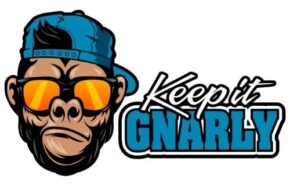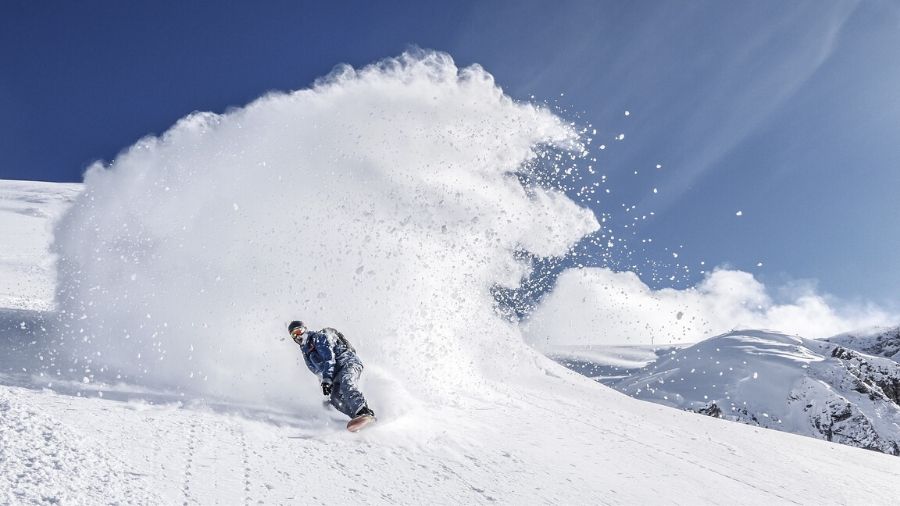
The mountain inspires each of us in different ways. The way we choose to ride down becomes an artistic expression. Snowboarders are a creative group, and thus, there are many different styles, and types of snowboarding.
Snowboarding type refers to the kind of board used to navigate the mountain. These boards are specifically designed with your terrain preference in mind. These include:
- All-Mountain
- Freeride
- Freestyle
- Powder/Backcountry
- Freecarve
- Splitboarding
Snowboarding styles reflect more specific features, or methods used in snowboarding events, and competitions. These are:
- Jibbing
- Slopestyle
- Big Air
- Half Pipe
- Boardercross
- Big Mountain
- Snowboard Racing
You may be curious why this matters at all. The answer is that the type of rider you are, and the style you choose to ride in will dictate what type of equipment you need. Perhaps you’ve been riding the wrong board for the type of riding you like to do.
Similarly there might just be a better board out there to optimize your performance. When people discover their appropriate setup, its a eureka moment, and there’s more fun to be had.
Another reason you should consider these types and styles is that you may want a multiple board quiver. Let’s say you’re a freerider, but you also enjoy powder, and the backcountry. There are some epic powder specific boards that are completely different than freeride equipment. Or, maybe you enjoy big mountain riding, and freestyle, park sessions. Then you’ll definitely need two different boards.
If you’re still wondering about the many different ways you can get down the mountain, then read on. Below you will find a comprehensive list of the different types of snowboarding and the diverse styles that have emerged.
Table of Contents
Snowboarding Types
We’ll now dive into the 6 main snowboarding types and differentiate between them.
All Mountain
This is the most general type of snowboarder. This type of rider enjoys every aspect of the mountain. Beginners will naturally start out as an all mountain type. This type of boarder is just like it sounds. They enjoy every type of run on the mountain, from groomed runs to the park, or backcountry.
This board is for the generalist. Suitable board types will have medium flex for clean carves, and maneuverability through all types of terrain. These boards will have a directional shape as they are meant to be ridden in one direction. This board will perform for all aspects of the mountain, whether that’s boosting little airs, grinding a rail, or cruising downhill.
Freeride
This type of snowboarder is more advanced than the all mountain generalist. I categorize this type of boarder as different from the all mountain, because they prefer a different type of slope. The freerider enjoys high speed and more advanced runs.
This type of snowboarder is particularly fond of fresh powder runs. They like going out of bounds, and into the trees as much as possible. They enjoy turning the natural landscape into park-like features. For example, the powder built up on the side of the run is a feature similar to a jump you might find in the park.
For these reasons, the freerider requires a different type of board than the all mountain rider. The ideal freerider board will need to be stiffer to hold in better during hard carves. The board should be a little bigger to float well in the powder.
Freestyle
This snowboarder loves the park. They live to hit rails, boxes, and jumps. Your board will require some freestyle elements because you still go down some groomed runs. However, your not spending time in the backcountry on this board. Basically the entire mountain is a playground to you, and you need a board that will perform this function.
These boards will have a soft to medium flex, for enhanced forgiveness during tricks and jibbing. A medium flex will be appropriate for landing airs off of jumps also. They typically have enhanced bomber edge and base construction due to the impact received during rail slides, and grinds. Also for all the spins freestylers enjoy, the board should have less swing weight.
Powder / Backcountry
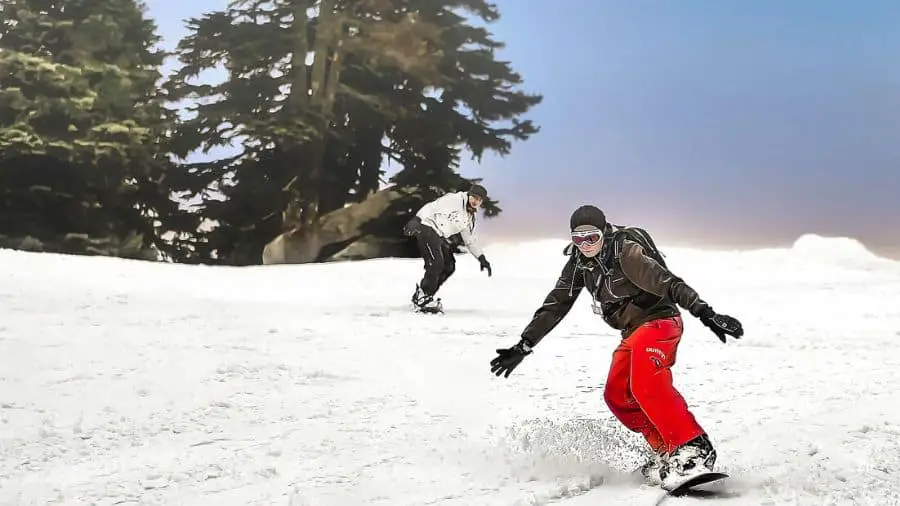
This snowboarder lives for and loves powder. They seek out powder in one of two ways.
Overnight, when a storm brings in a fresh layer of powder across the mountain. First tracks (when a snowboarder is first to snowboard an area of fresh snow) in the morning will offer fresh powder throughout the runs.
Otherwise, this rider will veer off the run, and in between trees to find hidden lumps of powder that remain untouched by other snowboarders. They might also go to the backcountry, and out of bounds areas of the mountain.
There are powder specific boards made by some manufacturers. A good powder board is shorter, and fatter in the nose section. Transferring the surface area to the nose gives you more flowthrough deep powder.
Riding in deep powder is very tiring on your back leg, and these boards help to transfer flow to your front foot, alleviating back leg strain.
Powder boards will also benefit from a smaller, swallowtail shape. This allows for smaller, more precise turns. The rider is able to whip the tail around really quickly in powder. This maneuverability in powder enables better navigation through tight tree spots. A short sidecut radius will help foster quicker turns as well. You’ll be able to throw up a big wall of snow as a result.
Freecarve
Also known as alpine or race boards. They are longer, and narrower than a typical snowboard. In appearance, these boards are similar to a large ski. The board will be one-directional, and stiff.
The goal of riding in this style is to make clean, smooth, turns on nicely groomed runs. Boots for this setup are harder than snowboard boots. They are more similar to ski boots. These boards work optimally on groomed runs. Ideally, this rider is up early in the morning to get first tracks.
These boards are designed for going downhill, not for performing tricks or hitting rails. This is an advanced style of board, typically used in snowboard racing events.
Splitboarding
A splitboard is a snowboard that splits into two skis. The idea is that you will be able to explore more of the backcountry by skiing uphill to untracked spots. You split the snowboard in two, and attach adhesive skins to the bottom of the skis. Then cross country ski wherever you’d like to go.
Splitboards have two modes. Its easy to switch back, and forth between the snowboard setup, and the ski setup. You unlatch the tip, and tail end of the snowboard. Then switch the bindings over to ski mode. This process only takes one to two minutes.
Snowboarding Styles
To further delineate between types of snowboarding, several styles of snowboarding have emerged.
Jibbing
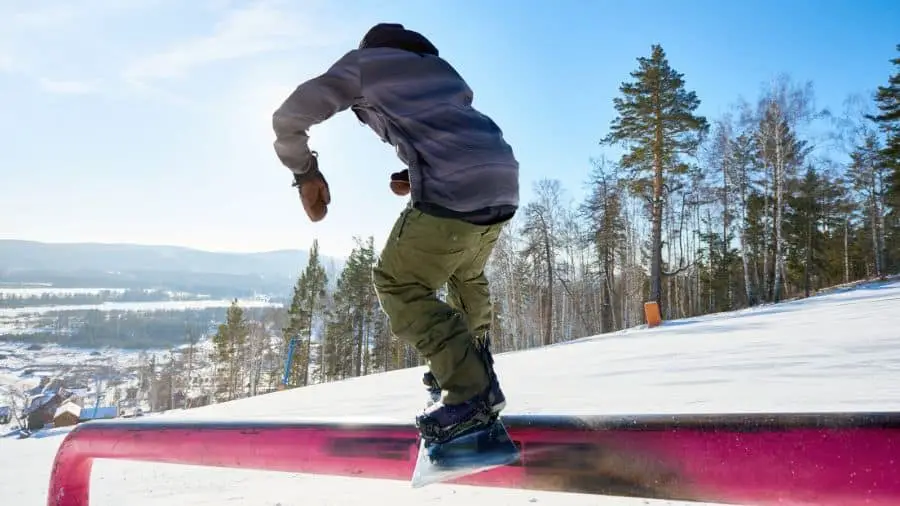
Jibbing means hitting, or sliding boxes, and rails. Jibbing refers to jumping, sliding, or riding on top of objects. To jib properly you’re not using your edges at all. While sliding the length of a box you don’t use your rails, because this would result in a fall. You’ll want to keep your body position, and weight central over your board.
Jibbing is similar to skateboarding, in that you can jib in an urban setting, hitting urban features. It’s directly related to grinding on a skateboard. You could jib a railing of a set of stairs near your cabin, or in town.
There are specific types of boards that work best for jibbing. You will be able to jib on any board, but these boards will work better. They should be twin shape, or symmetrical like a skateboard so that you will be able to ride switch stance.
A soft, to medium soft flex is preferred for better maneuverability. Most will have a rocker camber for a looser feeling when attempting technical tricks. They’re also smaller, so that they are flexible, soft, and forgiving.
There are a number of rail jib specific contests such as Absolutpark’s Jib King.
Slopestyle

You’ll see this type of riding in the X-games and the Olympics. There’s a downhill course set up with rails, boxes, and large jumps. The rider is able to choose which line they’d like to take and hit the features they want to. The beginning of the course typically boasts several rail components while there are large jumps near the bottom.
Riders navigate the features with unique lines, while judges score their round. The judges want to see individuals stand out, and choose extremely difficult or technical tricks to showcase their talent. They want to see perfect execution. The scores are out of one hundred points.
Typically the rail section is at the top of the course. At the bottom, you’ll see the biggest man-made jumps available to snowboarders. Riders are busting 1080s regularly, and progressing to 1620’s. Yuki Kadono landed a quad cork 1980 during a casual slopestyle session in 2017.
Slopestyle snowboards are freestyle-like, to allow switch riding and rail grinds. They are stiffer than park boards, for more stable landings off of big jumps.
Big Air
This is another event you’ll see at the X-Games and the winter Olympics. In the X-games the riders compete in a jam format, where they go one after the other. There are eight riders. Combined they have twenty-five minutes and are allowed to hit the jump as many times as the clock will allow. It is a judged event, and they will get two scores combined.
They take off at the top of the hill and rapidly gain speed. There is one large jump to hit at the bottom. This is an excellent spectator sport because the fans have front row seats to the huge tricks they launch. Riders are required to do one jump to the right, and one jump to the left. Both of those tricks are scored out of fifty points and then combined for a total score out of one hundred.
Riders are able to choose the type of trick they want to attempt. You’ll see double backflips, backside triple 1440 melons, and front side triple-dip 1800’s. Basically you will see the most jaw-dropping stunts you’ve ever seen. The world’s best snowboarders compete in this event, progressing the sport towards bigger spins, and more advanced tricks.
Big air snowboards should be freestyle in nature, with added stiffness for high-speed responsiveness.
Halfpipe
This event is actually called the Superpipe at the X-games. It’s also an Olympic snowboard event. A pipe is manually carved into the mountain for this competition.
At the X-Games, they use the jam format, where riders go down the pipe one after another. You are scored on your single best run, in other words, whatever your best score is you keep.
Every run you do is judged on overall impression. The X-Games judges use a live ranking system for this event. There are meters on the side of the pipe that indicate how hight the rider is boosting out of the pipe. Riders start at the top, gain speed, and drop-in. They go back and forth through the pipe boosting tricks, and huge grabbed airs out the sides.
You see a lot of progression in this event as well. Some of the best snowboarders in the world flock to this event. The crowd of fans is at the bottom with an excellent viewing perspective.
The best boards for halfpipe are freestyle. The best ones have a stiffer flex in the midsection to help the board hold a good edge. The softer tip and tail allow the board to release away from the pipe with ease. The board should be symmetrical to allow for switch landings and takeoffs.
Boarder Cross
This is another Olympic, and X-Game event. It is also called Snowboard Cross. Four to six snowboarders will race against one another in this competition.
Snowboarders line up in starting gates at the top of a downhill speed course. The course is usually quite narrow. There are several intricate features including, back turns, and vertical drops. There are also jumps along the course.
Each event boasts a different course. The designer will mix up the turns and jumps differently. Riders race down, through the course, as fast as they can in groups of four or more. There are often crashes as snowboarders run into one another on their way down. With speed and precision, they aim to finish the downhill race in first place.
The best boards for this event are typically a little heavier than a normal freestyle board. They should be stiff and responsive. These riders are very advanced, and injuries are common with imminent collisions.
Big Mountain
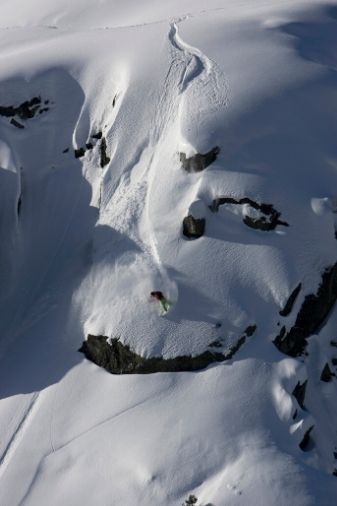
This type of snowboarding is spectacular to watch. These highly skilled individuals board the challenging, and obscure areas of the mountain. There are movies you can watch that showcase big mountain style. In these films snowboarders take on untracked, backcountry, powder runs on huge mountains. A few epic films to watch are, Nation from Transworld Snowboarding, The Art of Flight, and Escramble.
These mountains are usually uncharted and at high altitudes. Mountain ranges in the Himalayas, Southern Alps, and New Zealand offer some of the best opportunities for big mountain snowboarding. They’re looking for steep runs, with clean faces.
This style of rider looks for unknown slopes they will be able to make first tracks in. These individuals seek out adrenaline rushes in greater portions, as they continue to push the boundaries of the sport. It’s very dangerous as the threat of avalanches is high. You often need a helicopter to fly you up and drop you off at your desired drop point. They often spend weeks charting, researching, and planning new paths.
The pay off is going down the mountain, alone, and oftentimes in very deep powder. It’s beautiful, and breathtaking to watch this style of snowboarding. People spend their lives attempting to master the world of big mountain snowboarding.
Powder boards and larger mountain boards are ideal for this style. The right board will need to be powerful, versatile, and fast. Most are twin shaped, hybrid in nature, with a stiff nose for charging through powder.
Snowboard Racing
In this form, competitors attempt to make it down the course the fastest. Also called Alpine Snowboard Racing, the official name of the event is Parallel Giant Slalom. This event is in the Olympics.
In the Parallel Giant Slalom event two riders race down the mountain, side by side. They have two runs in the Olympics, and the combined times decide the winner. They begin at the top of the hill in starting gates. These races are set up on blue to black level slopes.
They take off and navigate their way around a course of flags, and gates. The rider must weave as closely as possible to the flags on a specific side. Alternating around them as they fly through the course. If they miss a gate or fall they receive a time penalty. The riders alternate sides to make sure it is fair.
Riders use a long, narrow snowboard with hard boots, stiff plate bindings, and a forward stance for racing.
There you have it. Now you will be able to determine what style, and type of rider you are. You’ll be able to buy the appropriate boards to maximize your fun. Maybe you even want to expand your quiver to a two or three board family. You’re sure to have some fresh ideas for new aspects of snowboarding to try in the future.
